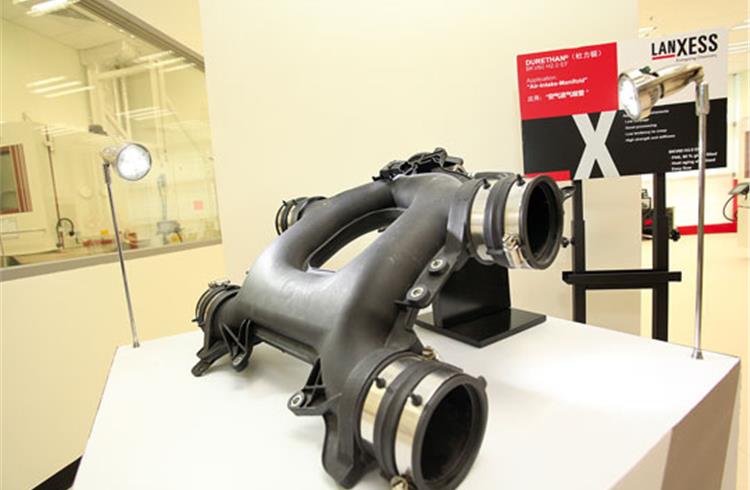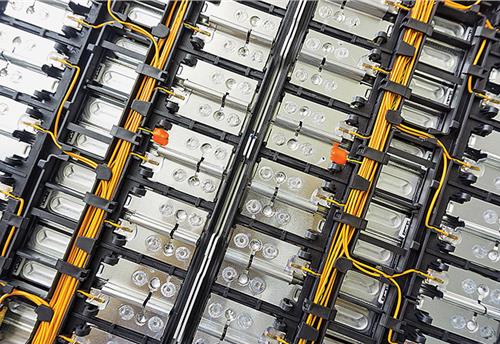2013 Lightweighting Special:Lanxess thinks big for weight loss gains
With a new applications centre in Hong Kong, Lanxess, which sees 2013 as the year of lightweighting solutions, aims to tap Asia and India’s potential, says Brian de Souza.
As part of Lanxess’ high- performance materials (HPM) business, the Hong Kong centre which includes a parts testing facility will provide specialist services to automotive companies which want to develop a product from conceptual stage through to design, validation and testing. Dr Christof Krogmann, vice-president, Asia Pacific, BU High Performance Materials, said that the Hong Kong centre is part of Lanxess’ integrated global network. While its main applications centre is in Germany, this unit takes Lanxess closer to new and existing clients in a dynamic part of the world in which Lanxess’s footprint includes a 60,000-tonne facility in Wuxi, China, and a 20,000-tonne plant at Jhagadia, Gujarat. Worldwide, the HPM network includes a facility at Gastonia in the US and a new facility at Porto Feliz in Brazil, slated to go on stream by end-2013. Krogmann said that lightweight structures and parts are the name of the game in pursuit of an overall goal of reducing CO2 emissions, promoting eco-mobility and replacing metal. He said the decision to locate the application centre in Hong Kong was motivated by the fact that the Science & Technology Park offered the requisite services, academic support and logistics.
In his remarks, Hartwig Meier, VP, global product and development of HPM business unit, said the challenge of lightweighting is particularly demanding in the auto sector. Giving an overview of the various auto parts that have potential for lightweighting, he mentioned parts as diverse as the gas tank carrier, airbag carrier, the cross-car beam, pedal brakes, front ends and battery cell holders. With the establishment of the new centre in Hong Kong, Meier said that Lanxess is looking for new applications that will potentially come from the booming auto markets of China and India.
Meier also elaborated on what Lanxess will offer to its clientele and made reference to its HiAnt branded service to clients that spans concept development, parts testing and processing. He spoke about the potential of Tepex, which are composite sheets and which, in combination with Durethan, one of Lanxess’ products, is being used on a project with Faurecia of France. Meier also alluded to the changes in the European automotive sector that will have a bearing on Lanxess’ lightweighting journey : in the German truck market, he spoke about the shift is taking place in favour of thermoplastic and also the future changes as far as the use of compressed natural gas (CNG) as a fuel. The use of CNG can potentially lower carbon dioxide emission by 20 percent and in the transition to CNG, Lanxess can tap a significant business opportunity in the lightweighting space as this will increase the demand for lightweight tanks. In fact, the first car with a CNG tank made of lightweight materials is slated to be a Volkswagen model that will debut in Europe in the third quarter of the current calendar year.
The future is here
Meier also threw light on other developments in the lightweighting space talking about future materials such as eco-friendly PVC as well as composites like the Tepex hybrid technology for lighter cars. Of course, this integration of Tepex composite sheets with Lanxess’ Durethan is still in integration phase and Lanxess hopes to be able to launch the product in India by the end of 2013. The final presentation was by Thomas Babl, head of the Regional Technical Marketing and Engineering services for HPM, who also took a select group of journalists (including this correspondent) on a guided tour of the application centre. He said that the parts testing lab is the centrepiece of the centre established in Hong Kong.
Babl, a Lanxess veteran, who has been in Hong Kong for a decade, spoke about the network of local universities that the centre will tap which include the Hong Kong Technical University, the Baptist University of Hong Kong and four other academic institutions. From Germany, the Rhenish-Westphalian Technical University, Aachen, will supply a steady flow of talent to the Centre. “With the part testing laboratory, we can validate our computer-based analysis,” Babl said, adding that “we are now in a position to do reverse engineering’. As Lanxess nears the first decade of its existence independent of Bayer AG, it is undoubtedly hoping for a larger and significant play in not only lightweighting but also in the marketing of plastics, rubber, internediates and speciality chemicals. The lightweighting business worldwide is expected to grow from an estimated 70 billion euros (Rs 495,880 crore) to 300 billion euros (Rs 21,25,200 crore) by 2030, and this is clearly where Lanxess wants to be a formidable player.
INTERVIEW WITH DR CHRISTOF KROGMANN, VP, ASIA-PACIFIC, LANXESS BU HPM BIZ
How do we link the Hong Kong centre to India, China?
This Centre will cater to all our clients in Asia-Pacific which is defined as Korea, Japan, China, the ASEAN, Australia and India. Our choice of Hong Kong is because it is central and very, very convenient to cater to this region. The environment here at the Science & technology park is very academic, all hi-tech companies — 300 of them — and there will be a cross-fertilisation for all stakeholders. India is very important and so we have made investments in a compounding facility in Gujarat. We are getting more business and customers. From a technical point of view, we get support from our personnel in Mumbai who also look for business. They are in close contact with our experts here. It is not only that this collaboration is from them to us but also from here going out to India and that involves meeting customers and discussing projects. We have a project with Visteon that is ongoing out here. It is for parts that will go under the hood.
From an India perspective, are your customers keen on parts under the hood or general in nature?
In India, the central theme is under the hood. Except for Tata Motors, most of the other OEMs are global in a sense, and relatively strictly controlled by their headquarters. The focus is clearly under the hood. So engine manifolds are important. The Japanese OEMs are a little behind in metal replacement compared to European OEMs, which are talking about the use of engineering plastics in the range of 15-20kg per car while Hyundai is at about 20-25kg; Japanese OEMs use about 10kg on average and so there is room for improvement and we are working on that.
Are you looking at two- wheeler clients?
The Centre here is not for specific sector applications and a range is available. We have spoken with Honda Motorcycle & Scooter India and Bajaj Auto but are in discussions about what we can do. Honda, on the two-wheeler side, is independent from its parent but as of now there's no concrete project as yet.
How do you plan to take the HiAnt service in India?
We start with concept development phase after mutual discussions with our clients — with support from Hong Kong — and then go about the various pieces that include materials, analysis, CAD/CAE and feasibility and finally, design support, moulding and testing. We do this for all customers in Asia, Europe and US. We are looking for innovative customers, be they in any market.
How do you see your business panning out in India from a sector perspective?
No opportunities in trucks unless the strategy of the local OE changes significantly but that is a long way off. It is a strong trend in Europe and in India, still some time away.
What are the growth drivers for lightweighting?
We are providing eco-friendly solutions and must ensure that cars get lighter, and fuel efficient. Then there are opportunities in electric vehicles. We are convinced that we can add to all these trends. Apart from metal replacement, there is design freedom and we have many answers to these trends.
What are your objectives in the year of lightweigthing?
We want to put our capabilities out there in the marketplace to the automotive sector. Over the last couple of years, we have had 'Rubber Days' and that has been under the template of green tyres. This has given us good results in areas like green tyre labeling and it will come to India eventually. Korea and Japan are discussing this intensively, and so is China.
BRIAN DE SOUZA
RELATED ARTICLES
Strong support for EV ambitions
New policies and initiatives reflect the government's comprehensive approach to driving industrial growth, fostering inn...
Branded content: HL Klemove inaugurates first Local ADAS Radar Manufacturing Unit in India, marks a significant achievement in “Make in India” initiative
The inauguration ceremony was held in the presence of Vinod Sahay, President and CPO of Mahindra & Mahindra Ltd. and Dr....
BluWheelz to 'Green Up' logistics sector
With their EVs-as-a-service solution, the startup is playing it smart with costs and looking to electrify the entire seg...





 By Autocar Pro News Desk
By Autocar Pro News Desk
 07 May 2013
07 May 2013
 2870 Views
2870 Views









